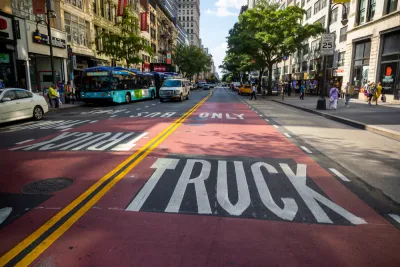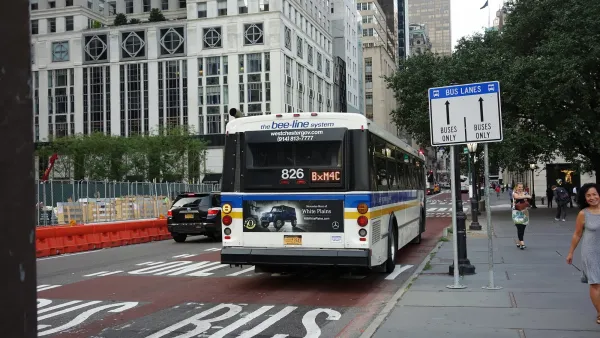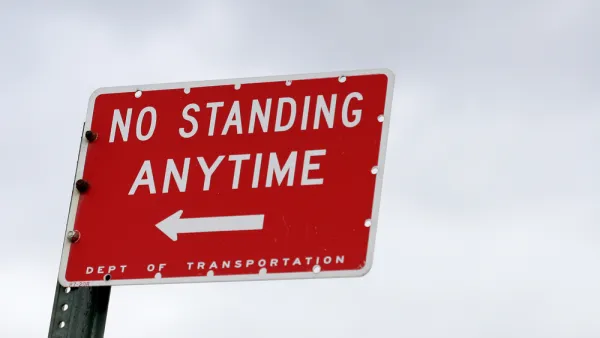Predictions of carmageddon have not come to pass after New York City blocked most car traffic of a section of 14th Street in Manhattan to make way for buses.

The initial reviews of the new bus priority on 14th Street in Manhattan were positive, but there was a sense that many writers in New York were waiting until the dust settled on an controversial and innovative new street configuration that made its debut on October 3, 2019.
An article written by Gina Bellafante for the New York Times and published over the weekend takes a more definitive stance: 14th Street is a huge success that should be duplicated elsewhere in the city.
Recently, I wandered around the vicinity of 14th Street and encountered a quiet that was almost eerie. I was unnervingly reminded of the days after 9/11, when cars were prohibited from making their way downtown. No one going to Cafe Cluny (on the corner of West 12th and West Fourth Streets) would have heard a single honking horn.
The relative silence was the result of the city’s recent decision to ban most cars from 14th Street. As transportation analysts had predicted all along, traffic doesn’t necessarily reroute itself when cars are pulled off certain roads. It almost starts to disappear.
The project is notable because it was delayed by lawsuits that predicted just the opposite scenario on streets in the vicinity of 14th Street would come true.
Bellafante also notes that side streets aren't the only beneficiary of the new arrangement. 14th Street itself is also transformed:
Initial data indicate that the buses, previously some of the slowest in the city but now, free of so much competition, have become much faster. An M14 bus trip that typically took 30 minutes now is taking about 21 minutes. One morning this week, a bus was so ahead of schedule that it had to stop at an intersection and pass the time so it wouldn’t get too ahead of itself.
Bellafante is also willing to test the waters on the idea of expanding the pilot project to more streets. "Imagine 42nd Street without traffic," for instance.
FULL STORY: Cars Were Banned on 14th Street. The Apocalypse Did Not Come.

Analysis: Cybertruck Fatality Rate Far Exceeds That of Ford Pinto
The Tesla Cybertruck was recalled seven times last year.

National Parks Layoffs Will Cause Communities to Lose Billions
Thousands of essential park workers were laid off this week, just before the busy spring break season.

Retro-silient?: America’s First “Eco-burb,” The Woodlands Turns 50
A master-planned community north of Houston offers lessons on green infrastructure and resilient design, but falls short of its founder’s lofty affordability and walkability goals.

Test News Post 1
This is a summary

Analysis: Cybertruck Fatality Rate Far Exceeds That of Ford Pinto
The Tesla Cybertruck was recalled seven times last year.

Test News Headline 46
Test for the image on the front page.
Urban Design for Planners 1: Software Tools
This six-course series explores essential urban design concepts using open source software and equips planners with the tools they need to participate fully in the urban design process.
Planning for Universal Design
Learn the tools for implementing Universal Design in planning regulations.
EMC Planning Group, Inc.
Planetizen
Planetizen
Mpact (formerly Rail~Volution)
Great Falls Development Authority, Inc.
HUDs Office of Policy Development and Research
NYU Wagner Graduate School of Public Service




























